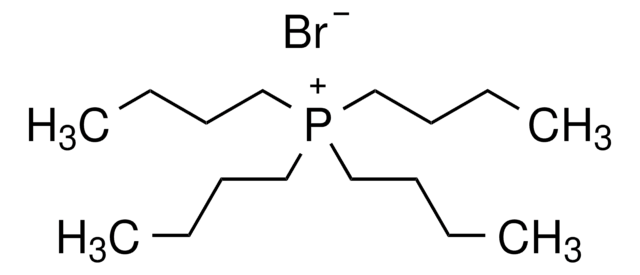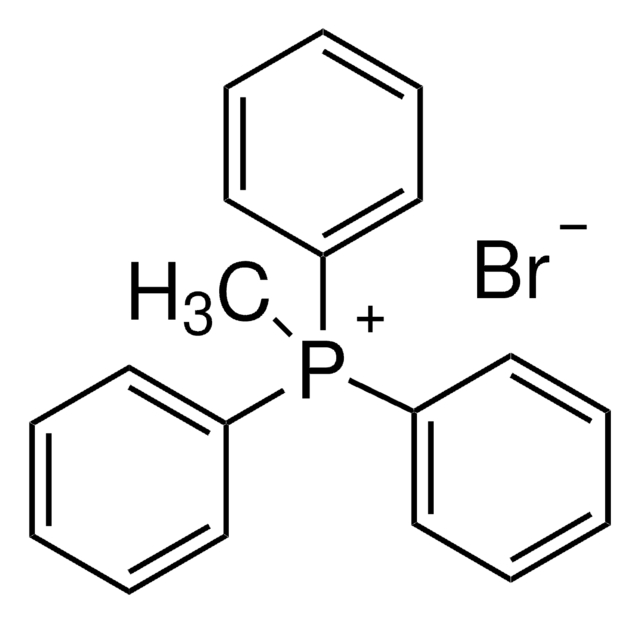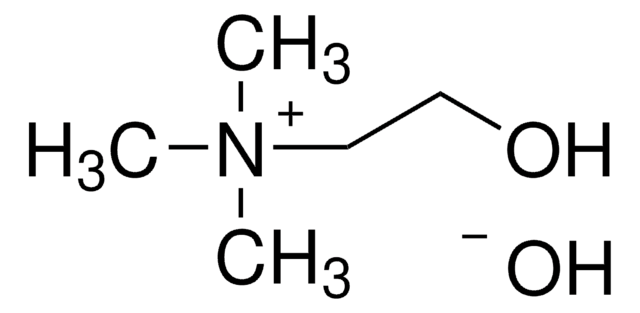438294
Tetrabutylphosphonium hydroxide solution
40 wt. % in H2O
Sinónimos:
TBPH
About This Item
Productos recomendados
form
liquid
Quality Level
concentration
40 wt. % in H2O
refractive index
n20/D 1.412
density
0.989 g/mL at 25 °C
functional group
phosphine
SMILES string
[OH-].CCCC[P+](CCCC)(CCCC)CCCC
InChI
1S/C16H36P.H2O/c1-5-9-13-17(14-10-6-2,15-11-7-3)16-12-8-4;/h5-16H2,1-4H3;1H2/q+1;/p-1
InChI key
DFQPZDGUFQJANM-UHFFFAOYSA-M
¿Está buscando productos similares? Visita Guía de comparación de productos
Application
- To convert poorly water-soluble acidic APIs into TBP ionic liquids (IL).
- As a cation source in the synthesis of Good′s buffer ionic liquids (GB-ILs) via an acid−base neutralization reaction with Good′s buffer anions.
- To synthesize tetrabutylphosphonium acetate, which along with Cu2O-nanoparticles forms an excellent catalyst system for protodecarboxylation reactions.
signalword
Danger
hcodes
Hazard Classifications
Skin Corr. 1B
Storage Class
8A - Combustible corrosive hazardous materials
wgk_germany
WGK 3
flash_point_f
Not applicable
flash_point_c
Not applicable
ppe
Faceshields, Gloves, Goggles, type ABEK (EN14387) respirator filter
Elija entre una de las versiones más recientes:
¿Ya tiene este producto?
Encuentre la documentación para los productos que ha comprado recientemente en la Biblioteca de documentos.
Los clientes también vieron
Nuestro equipo de científicos tiene experiencia en todas las áreas de investigación: Ciencias de la vida, Ciencia de los materiales, Síntesis química, Cromatografía, Analítica y muchas otras.
Póngase en contacto con el Servicio técnico









